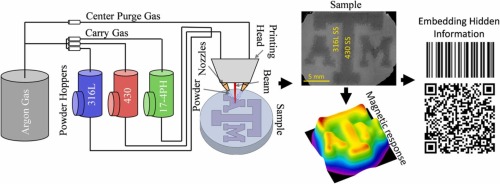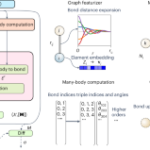2022-12-22 テキサス A&M大学

・ テキサス A&M 大学とパデュー大学が、金属積層造形技術を利用して磁気タグを埋め込む、偽造品検出技術を開発。
・ 偽造品による工業製品や部品の違法なコピー・入れ替わりの防止は、米国や世界の製造業や防衛産業における最優先事項。デバイスやパーツは安価・容易に低品質製品に模造され、ブランド名まで盗用されることもある。
・ 新技術では、金属製品や部品の積層造形プロセスにおいて、認証情報を含んだ磁気タグを製品性能や寿命に影響することなく埋め込む。磁気タグは、スマートフォン等の磁気センサーデバイスによるスキャニングで読み取れる。
・ 3 軸の磁気センサーを作製し、金属製品の磁束強度をマッピングして埋め込んだ磁気タグの領域の明示を実証。バーコードや QR コード等の物理的なタグを代替する可能性に加え、産業用途に応じてトレーサビリティーや品質管理等のアプリケーションも期待できる。
・ 認証情報を埋め込む技術は他にもあるが、高度で高コストな機器の必要性が実用化を阻んでいる。新技術は、金属製品の 3D プリンティングにおいて非磁性部への認証情報の埋め込みに材料の磁気特性を利用する初の試みとなる。
・ 新技術では、製品外部に取り付ける物理的なタグやコードを超える安全性の確保が可能だが、磁気タグへのアクセスにユーザーによる特定の処置や刺激を要する物理的な「二重認証」の実施を通じた、認証情報のより安全な読み取り方法を開発する予定。
URL: https://today.tamu.edu/2022/12/20/using-additive-manufacturing-to-detect-counterfeit-parts/
<NEDO海外技術情報より>
関連情報
Additive Manufacturing 掲載論文(アブストラクトのみ:全文は有料)
Embedding hidden information in additively manufactured metals via magnetic property grading for
traceability
URL: https://www.sciencedirect.com/science/article/abs/pii/S2214860422006509?via%3Dihub
Abstract
Use of counterfeit goods has a large negative impact on manufacturing industry. Recently, counterfeiting of additively manufactured parts is being facilitated by advances in 3D scanning methods, which enable users to retrieve high resolution models and improve reverse engineering approaches. The present study develops and validates a methodology for encoding part authentication information within additively manufactured hardware during part fabrication which is based on embedding a ferromagnetic physical tag within a non-magnetic product. To demonstrate the applicability of this technique, non-magnetic 316L stainless steel was fabricated via laser direct energy deposition with embedded ferromagnetic 430 or 17–4PH stainless steels regions for local control of the magnetic response. The magnetic flux normal to the surface was recorded using a custom built 3-axis magnetic sensor to obtain magnetic flux intensity maps, revealing the embedded magnetic regions. The distribution of the magnetic regions, also characterized using scanning electron microscopy evaluations, can be retrieved from this map revealing the features of the physical tag. Magnetic response of the composites is explained as a function of local composition changes and crystalline structure. The methodology introduced here can be used to embed several traceability tools such as magnetic barcodes and Quick Response (QR) codes away from the surface, which can be detected on demand, in 3-D printed parts.




